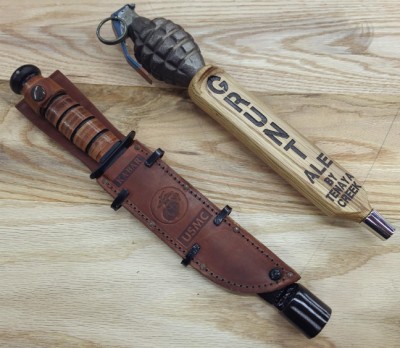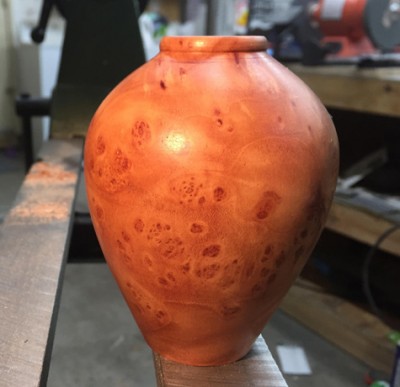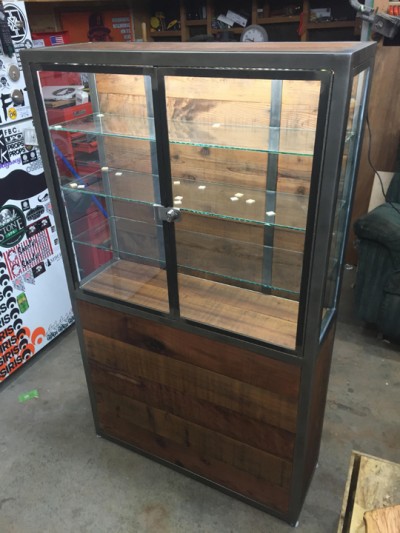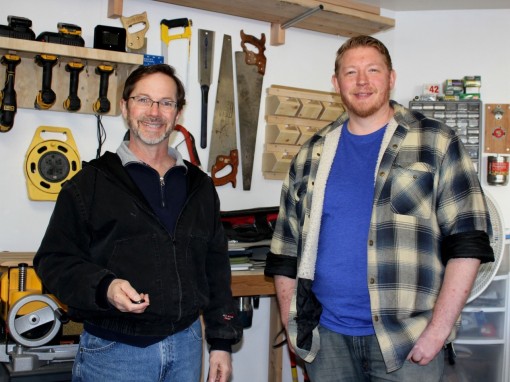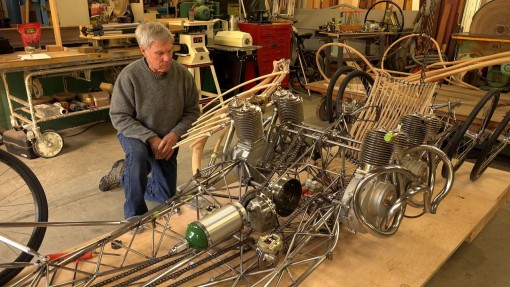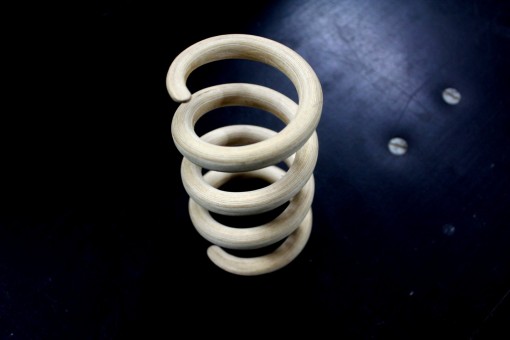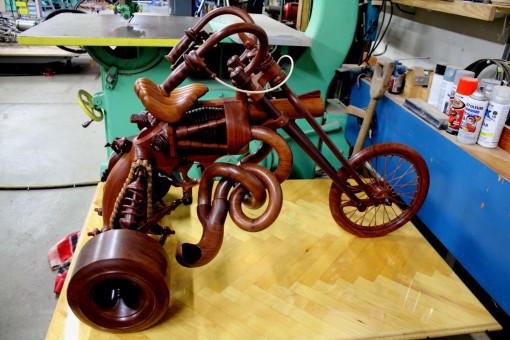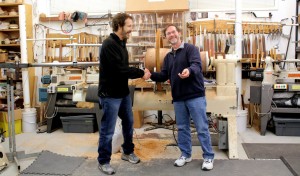Building a workbench from reclaimed wood is both easy to do and easy on the wallet. You can gain even more in character of appearance if you source reclaimed wood for your project.
While reclaimed wood has grown into a trendy choice for interior decorating, it also makes for some of the best stock on hand for building anything from wooden toys to, as in this case, a sturdy workbench.
There are just a few things about reclaimed wood of which to be aware before you sink any nails or apply the glue.
Hidden Treasure
If you are unfamiliar with reclaimed wood, you might find yourself questioning this choice at first blush. The pieces are hardly smooth or square. It looks like an irregular mess of warped, crooked and rough sawn pieces.
However, when you take a closer look, you begin to notice the aspects of reclaimed wood that makes this source of material very appealing.
Beneath the crusty dirt or chipped and fading paint, through the nails or other metal, beyond the authentic aging and abuse, there is some fine quality wood there.
Depending upon the age and origination, you may have some high-quality, slow-growth stock that stands up to the demands of a reliable workbench.
You Decide: Old or New
With reclaimed wood, you get to make the decision whether you want to maintain its original appearance or take the time to mill the pieces. Beneath what can be considered a clever disguise, there is “good as new” wood just under the surface.
Remembering the fundamentals of a workbench are simple, your approach to preparing your stock should be as well.
Ultimately, the choice of design and degree of intricacy is up to you. Either way, step one is to address cleaning it up.
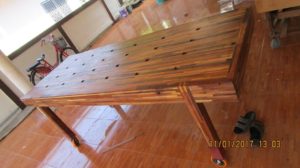
Cleaning Reclaimed Lumber
Reclaimed timber has trace elements, shall we say? It may have been a barn, at one time, or a gymnasium floor. Between the elements, exposure to natural waste, bugs, the presence of lead paint or chemical treatment typically applied to pallets, you will need to clean this wood.
A stiff brush and compressed air will clean off the finer particles. You can use soap and water to wash the pieces clean. You want to be careful with pressure sprayers to avoid damaging the wood. Using water means you will need to spread the pieces out to thoroughly dry.
Keep in mind, you want to avoid breathing in the sawdust from chemically treated lumber.
Inspect for Hardware
You will want to perform a visual inspection of all the reclaimed pieces to ensure there are no nails, tacks, screws or other remaining hardware and remove as many as you can. It only takes one nail to dull an expensive blade. And let’s be honest, for example in the case of table saws the blade doesn’t cost much but you really don’t want to ruin even a single blade by accidentally running it into a nail.
Urban lumber is notable for its remnant metal. You may appreciate the way the nail holes add character to the wood with their black stains.
Rough around the Edges
Reclaimed stock invariably shows the saw marks from how it was cut. Again, you can choose whether to keep these traces or sand them down. You would be able to mix and match the pieces to accentuate this aspect.
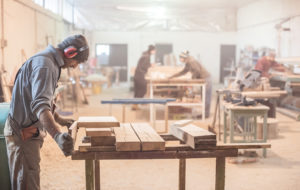
There may be pieces that are thicker at one end or irregular in shape. You can choose to work with these shapes unless you want to do the millwork to make them uniform in appearance. A workbench gets put through the paces anyway.
If the uneven qualities do not interfere with the intended work to be performed on the workbench, these aspects could add to the overall visual appeal.
Locating Reclaimed Lumber
There are numerous sources for reclaimed wood. Start where you are with local connections such as scraps and pallets from shops. Look for those people who specialize in repurposing barn wood or perform urban demolitions. Every time a store is turned over, there is a moment when the interior is remodeled.
In this process, there is a good deal of demolition where lumber might be reclaimed. Keep an eye out for tree trunks from which boards could be cut. You may even know of a neighbor who has a stock pile of logs they plan to get rid of. Just collect all that lumber and start crafting your workbench!
A very special thanks to Paul Stanley at Woodworkboss.com for submitting this great guest posting for the Jack Bench Blog!!

